Submitted:
19 April 2023
Posted:
20 April 2023
You are already at the latest version
Abstract
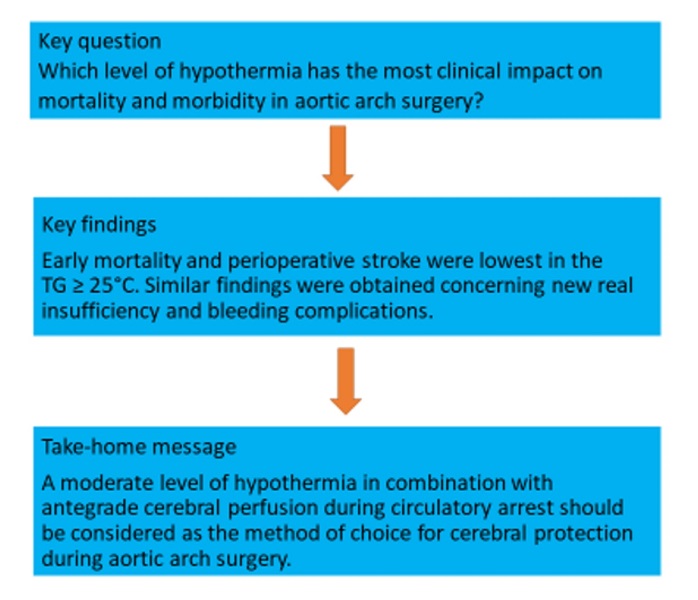
Keywords:
Introduction
Material and Methods
Search strategy and study selection
Outcomes of interest
Statistical analysis
Results
Study selection
Study population
Operative Outcomes
Clinical outcomes
Discussion
Limitations and Data availability statement
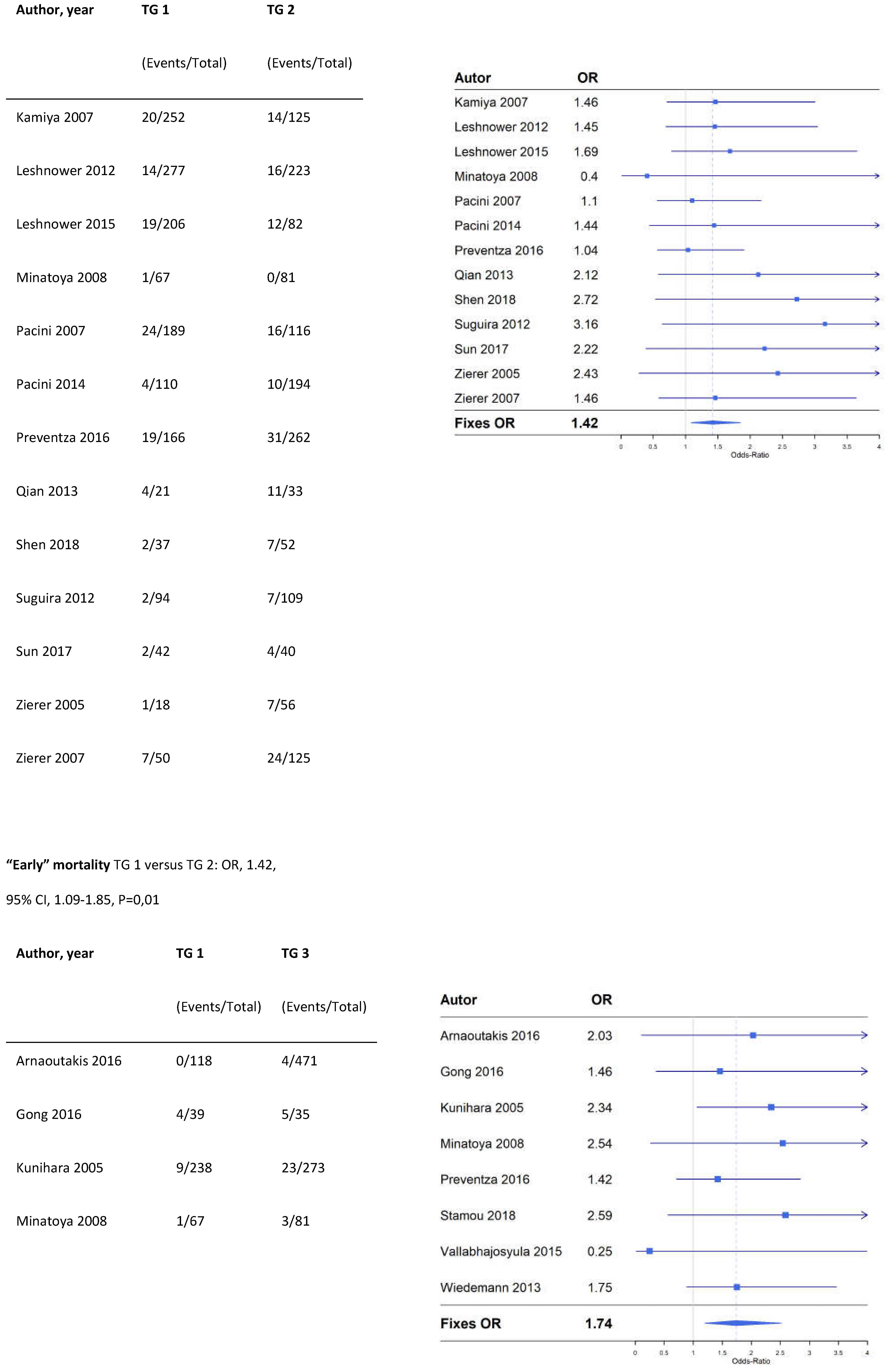
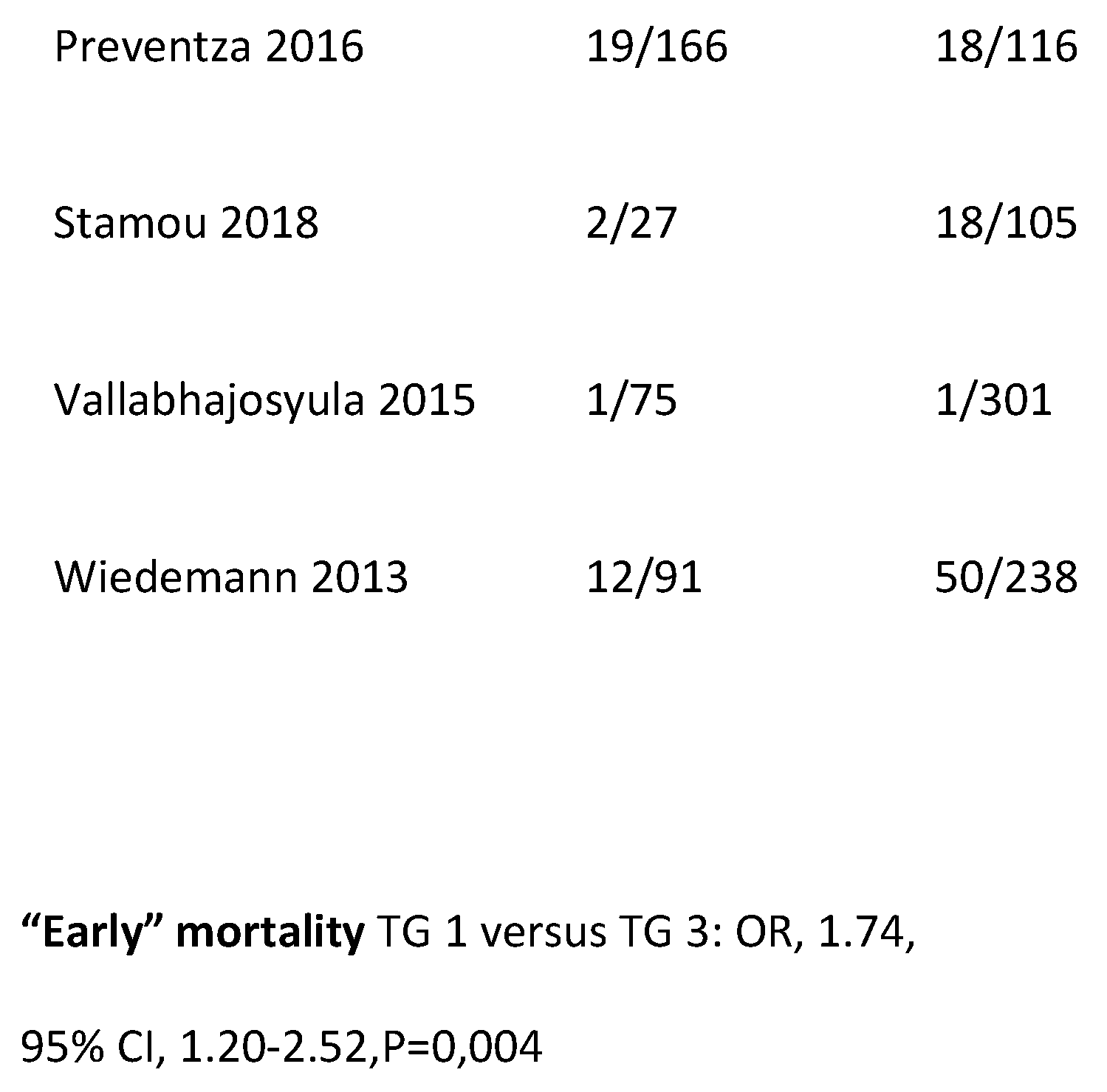
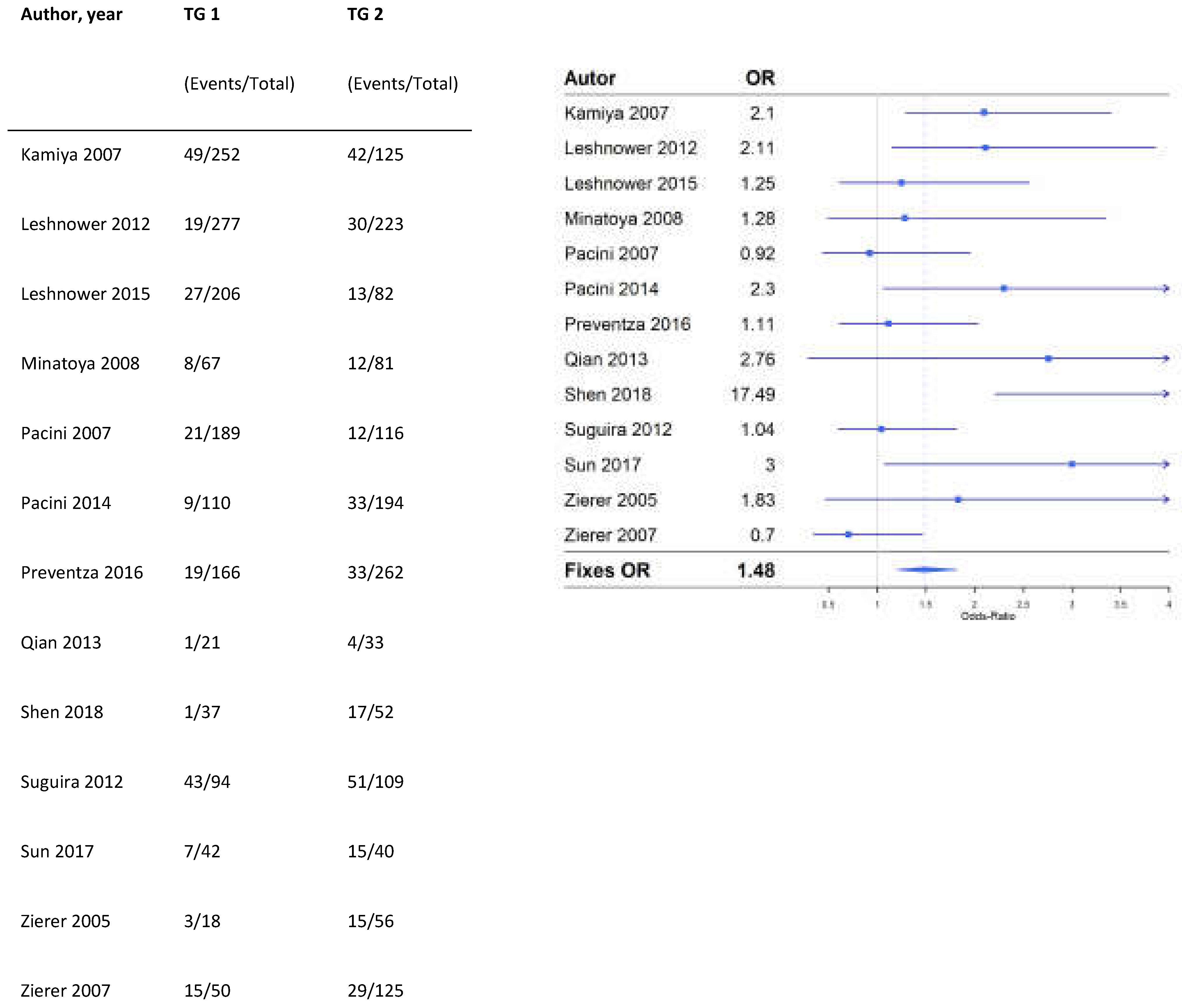
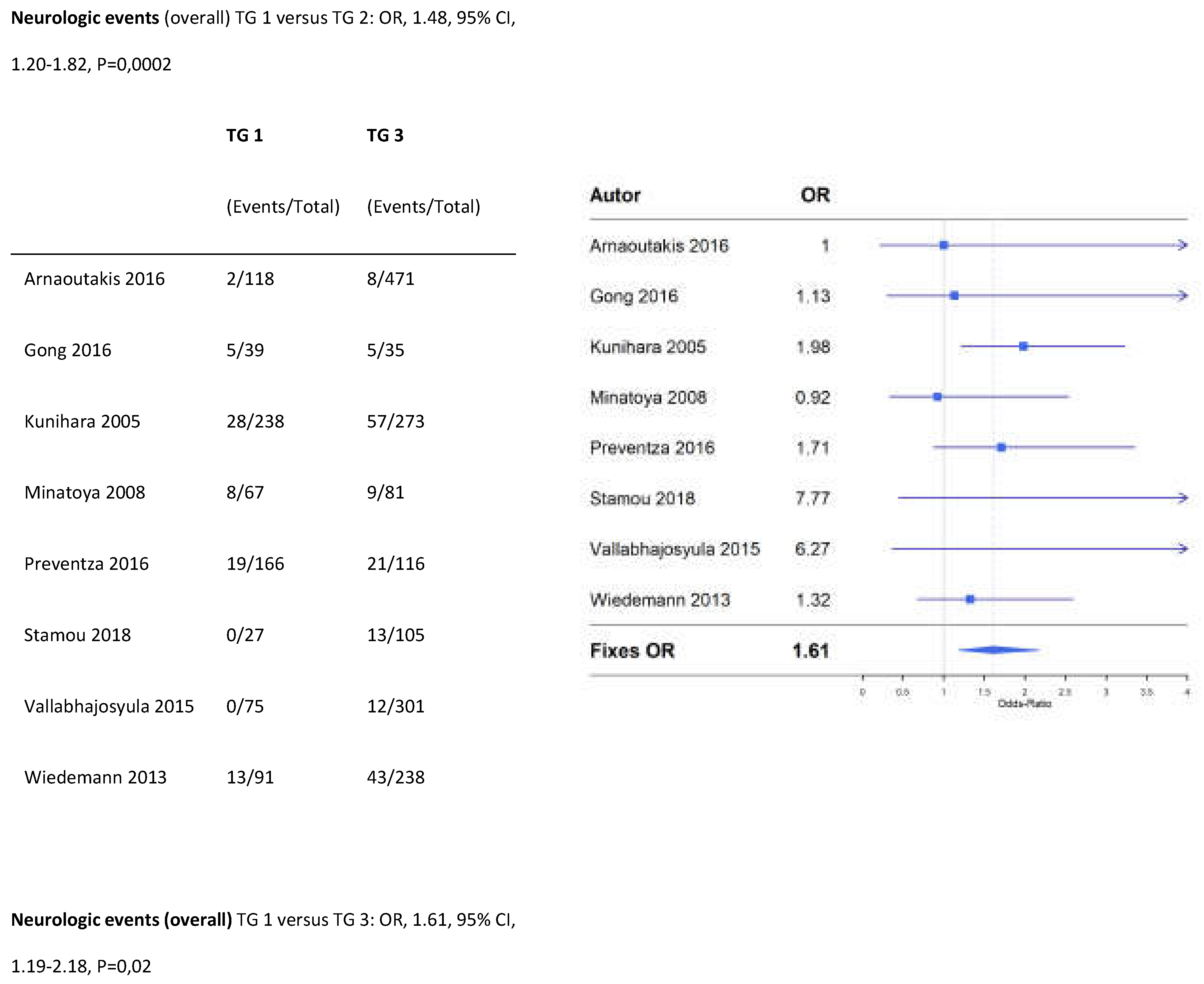
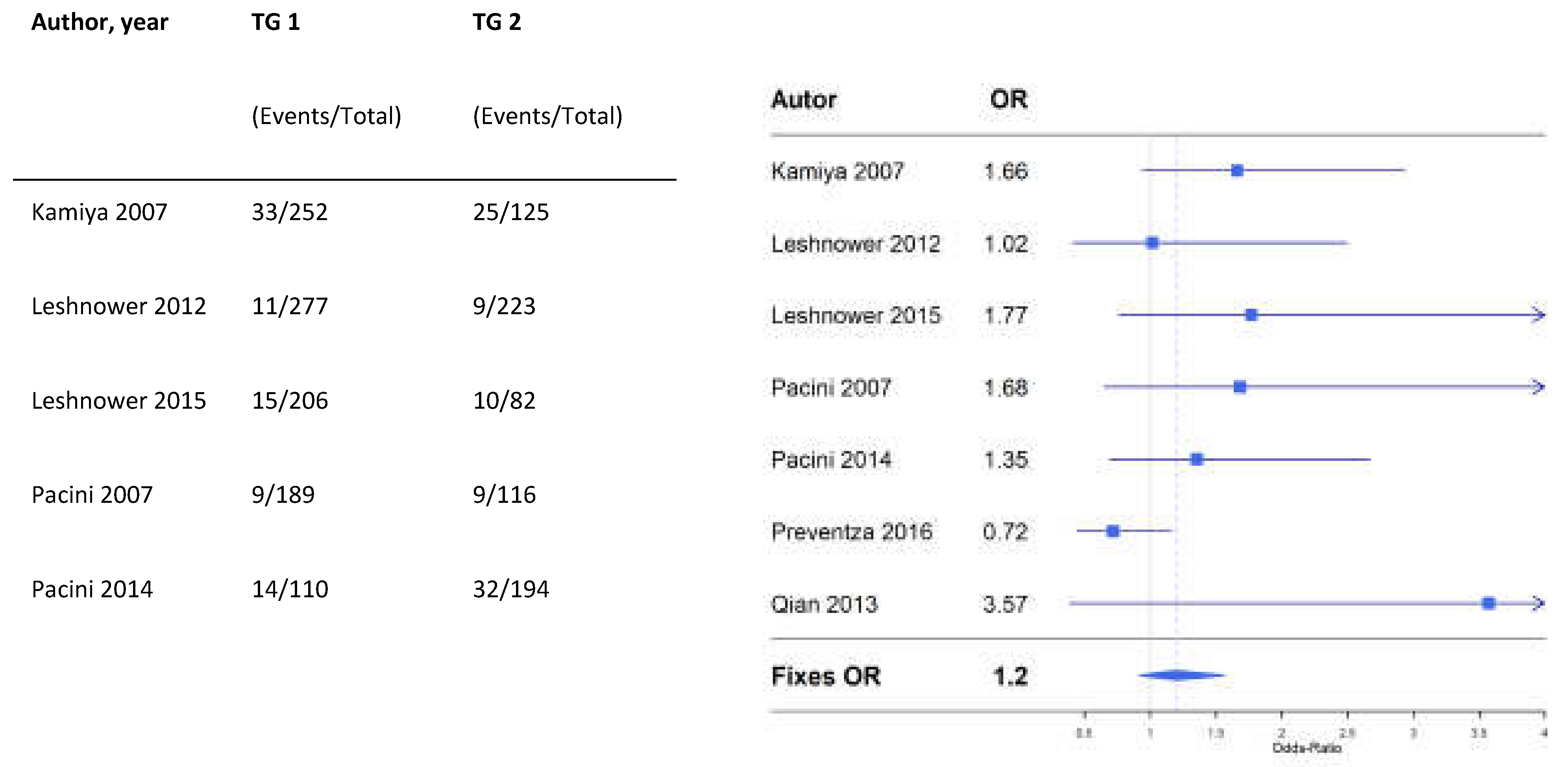
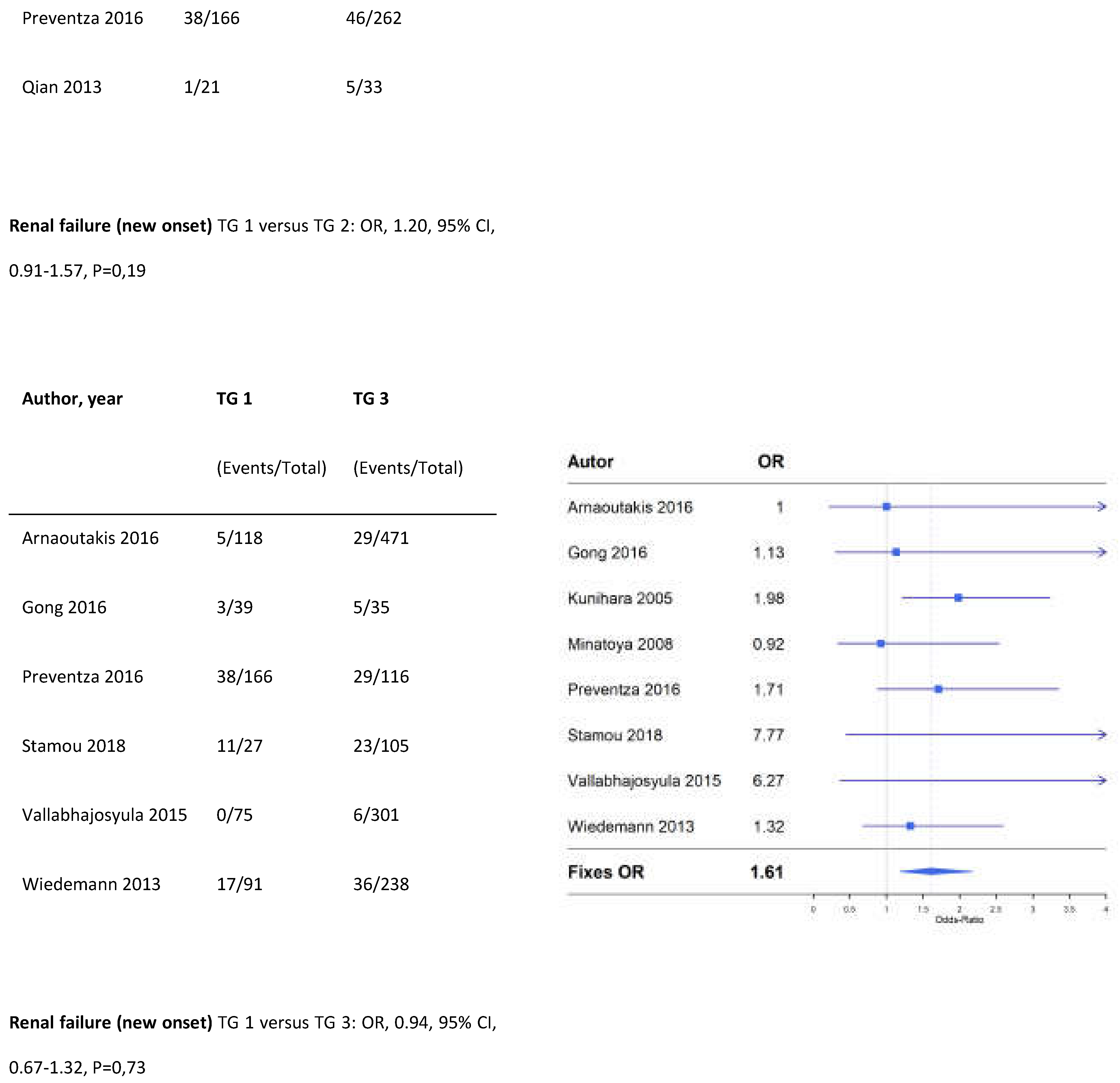
References
- Easo J, Weigang E, Hölzl PP, Horst M, Hoffmann I, Blettner M et al. Influence of operative strategy for the aortic arch in DeBakey type I aortic dissection: analysis of the German Registry for Acute Aortic Dissection type A. J Thorac Cardiovasc Surg 2012, 144, 617–23. [CrossRef]
- Czerny M, Fleck T, Zimpfer D, et al . Risk factors of mortality and permanent neurologic injury in patients undergoing ascending aortic and arch repair. J Thorac Cardiovasc Surg 2003, 126, 1296–301. [CrossRef] [PubMed]
- Griepp RB, Stinson EB, Hollingsworth JF, Buehler D. Prosthetic replacement of the aortic arch. J Thorac Cardiovasc Surg 1975, 70, 1051–63. [CrossRef]
- Di Eusanio M, Wesselink RMJ, Morshuis WJ, Dossche KM, Schepens MA. Deep hypothermic circulatory arrest and antegrade slective cerebral perfusion during ascending aorta – hemiarch replacement: a retrospective comparative study. J Thorac Cardiovasc Surg 2003, 125, 849–54. [CrossRef]
- El-Sayed Ahmad A, Papadopoulos N, Risteski P, Mortiz A, Zierer A. The Standardized Concep of Moderate-to-Mild Systemic Hypothermia During Selective Antegrad cerebral Perfusion for All-Comers in Aortic arch surgery: single-center experiece in 587 consecutive Patients over a 15 year period. Ann Thorac Surg 2017, 104, 49–55.
- Zierer A, Ali El-Sayed Ahmad A, Papadopoulos N, Mortiz A, Diegeler A, Urbanski P. Selective antegrad cerebral perfusion and mild (28°C-30°C) systemic hypothermic circulatory arrest for aortic arch replacement: Results from 1002 patients. J Thorac Cardiovasc Surg 2012, 144, 1042–50. [CrossRef] [PubMed]
- Zierer A, El-Sayed Ahmad A, Papadopoulos N, Detho F, Risteski P, Moritz A et al. Fifteen years of surgery for acute type A aortic dissection in moderate-to-mild systemic hypothermia. Eur J Cardiothorac Surg 2017, 51, 97–103. [CrossRef]
- Urbanski P, Lenos A, Bougioukakis P, Neophytou I, Zacher M, Diegeler A. Mild-to-moderate hypothermia in aortic arch surgery using circulatory arrest: a change of paradigm? Eur J Cardiothorac Surg 2012, 41, 185–191.
- Liberati A, Altman DG, Tetzlaff J, Mulrow C, Gotzsche PC, Ioannidis JP, Clarke M, Devereaux PJ, Kleijnen J, Moher D. The PRISMA statement for reporting systematic reviews and meta-analysis of studies that evaluate healthcare interventions: explanations and elaborations. BMJ 2009, 339, b2700.
- Livesay JJ, Cooley DA, Duncan JM, Ott DA, Walker WE, Reul GJ. Open aortic anastomosis: improved results in the treatment of aneurysms of the aortic arch. Circulation. 1982, 66 Pt 2, I122–7.
- Hameed I, Rahouma M, Khan FM, Wingo M, Demetres M, Tam DY, Lau C, Iannacone EM, Di Franco A, Palaniappan A, Anderson H, Fremes SE, Girardi LN, Gaudino M. Cerebral protection strategies in aortic arch surgery: A network meta-analysis. J Thorac Cardiovasc Surg 2020, 159, 18–31.
- Englum BR, He X, Gulack BC, Ganapathi AM, Mathew JP, Brennan et al. Hypothermia and cerebral protection strategies in aortic arch surgery: a comparative effectiveness analysis from the STS Adult Cardiac Surgery Database. Eur J Cardiothorac Surg. 2017, 52, 492–8. [CrossRef]
- Gega A, Rizzo JA, Johnson MH, Tranquilli M, Farkas EA, Elefteriades JA. Straight deep hypothermic arrest: experience in 394 patients supports its effectiveness as a sole means of brain preservation. Ann Thorac Surg. 2007, 84, 759–66. [CrossRef]
- Estrera AL, Miller CC 3rd, Lee TY, Shah P, Safi HJ. Ascending and transverse aortic arch repair: the impact of retrograde cerebral perfusion. Circulation 2008, 118, 160–6.
- Ehrlich MP, Ergin MA, McCullough JN, Lansman SL, Galla JD, Bodian CA, Apaydin A, Griepp RB. Results of immediate surgical treatment of all acute type A dissections. Circulation. 2000, 102, 248–52.
- Gaudino M, Ivascu N, Cushing M, Lau C, Gambardella I, Di Franco A, Ohmes LB, Munjal M, Girardi LN. Retrograde perfusion through superior vena cava reaches the brain during circulatory arrest. J Thorac Dis. 2018, 10, 1563–8. [CrossRef]
- Cheung AT, Bavaria JE, Pochettino A, Weiss SJ, Barclay DK, Stecker MM. Oxygen delivery during retrograde cerebral perfusion in humans. Anesth Analg. 1999, 88, 8–15. [CrossRef]
- Bachet J, Guilmet D, Goudot B, Termignon JL, Teodori G, Dreyfus G, Brodaty D, Dubois C, Delentdecker P. Cold cerebroplegia. A new technique of cerebral protection during operations on the transverse aortic arch. J Thorac Cardiovasc Surg 1991, 102, 85–93.
- Kazui T, Inoue N, Yamada O, Komatsu S. Selective cerebral perfusion during operation for aneurysms of the aortic arch: a reassessment. Ann Thorac Surg 1992, 53, 109–14. [CrossRef]
- De Paulis R, Czerny M, Weltert L, Bavaria J, Borger MA, Carrel TP. et al. Current trends in cannulation and neuroprotection during surgery of the aortic arch in Europe. Eur J Cardiothorac Surg. 2015, 47, 917–23. [CrossRef]
- Kazui T, Washiyama N, Muhammad BA, Terada H, Yamashita K, Takinami M. Improved results of atherosclerotic arch aneurysm operations with a refined technique. J Thorac Cardiovasc Surg. 2001, 121, 491–9. [CrossRef] [PubMed]
- Pacini D, Leone A, Di Marco L, Marsilli D, Sobaih F, Turci S, Masieri V, Di Bartolomeo R. Antegrade selective cerebral perfusion in thoracic aorta surgery: safety of moderate hypothermia. Eur J Cardiothorac Surg 2007, 31, 618–22. [CrossRef] [PubMed]
- Kamiya H, Hagl C, Kropivnitskaya I, Böthig D, Kallenbach K, Khaladj N, Martens A, Haverich A, Karck M. The safety of moderate hypothermic lower body circulatory arrest with selective cerebral perfusion: a propensity score analysis. J Thorac Cardiovasc Surg 2007, 133, 501–9. [CrossRef] [PubMed]
- Saritas A, Kervan U, Vural KM, Kucuker SA, Yavas S, Birincioglu LC. Visceral protection during moderately hypothermic selective antegrade cerebral perfusion through right brachial artery. Eur J Cardiothorac Surg 2010, 37, 669–76. [CrossRef]
- Strauch JT, Spielvogel D, Haldenwang PL, Zhang N, Weisz D, Bodian CA, Griepp RB. Impact of hypothermic selective cerebral perfusion compared with hypothermic cardiopulmonary bypass on cerebral hemodynamics and metabolism. Eur J Cardiothorac Surg 2003, 24, 807-16.
- Usui A, Oohara K, Murakami F, Ooshima H, Kawamura M, Murase M. Body temperature influences regional tissue blood flow during retrograde cerebral perfusion. J Thorac Cardiovasc Surg 1997, 114, 440–7. [CrossRef]
- Fan S, Li H, Wang D, Wu C, Pan Z, Li Y, An Y, Wang G, Dai J, Wang Q. Effects of four major brain protection strategies during proximal aortic surgery: A systematic review and network meta-analysis. Int J Surg 2019, 63, 8–15. [CrossRef]
- Tian DH, Wan B, Bannon PG, Misfeld M, LeMaire SA, Kazui T, Kouchoukos NT, Elefteriades JA, Bavaria J, Coselli JS, Griepp RB, Mohr FW, Oo A, Svensson LG, Hughes GC, Yan TD. A meta-analysis of deep hypothermic circulatory arrest versus moderate hypothermic circulatory arrest with selective antegrade cerebral perfusion. Ann Cardiothorac Surg 2013, 2, 148–58.
- Luo D, Wan X, Liu J, Tong T. Optimally estimating the sample mean from the sample size, median, mid-range, and/or mid-quartile range. Stat Methods Med Res. 2018, 27(6), 1785–1805. [CrossRef]
- Viechtbauer, W. (2010). Conducting meta-analyses in R with the metafor package. Journal of Statistical Software 36(3), 1–48, URL: https://www.jstatsoft.org/v36/i03/.
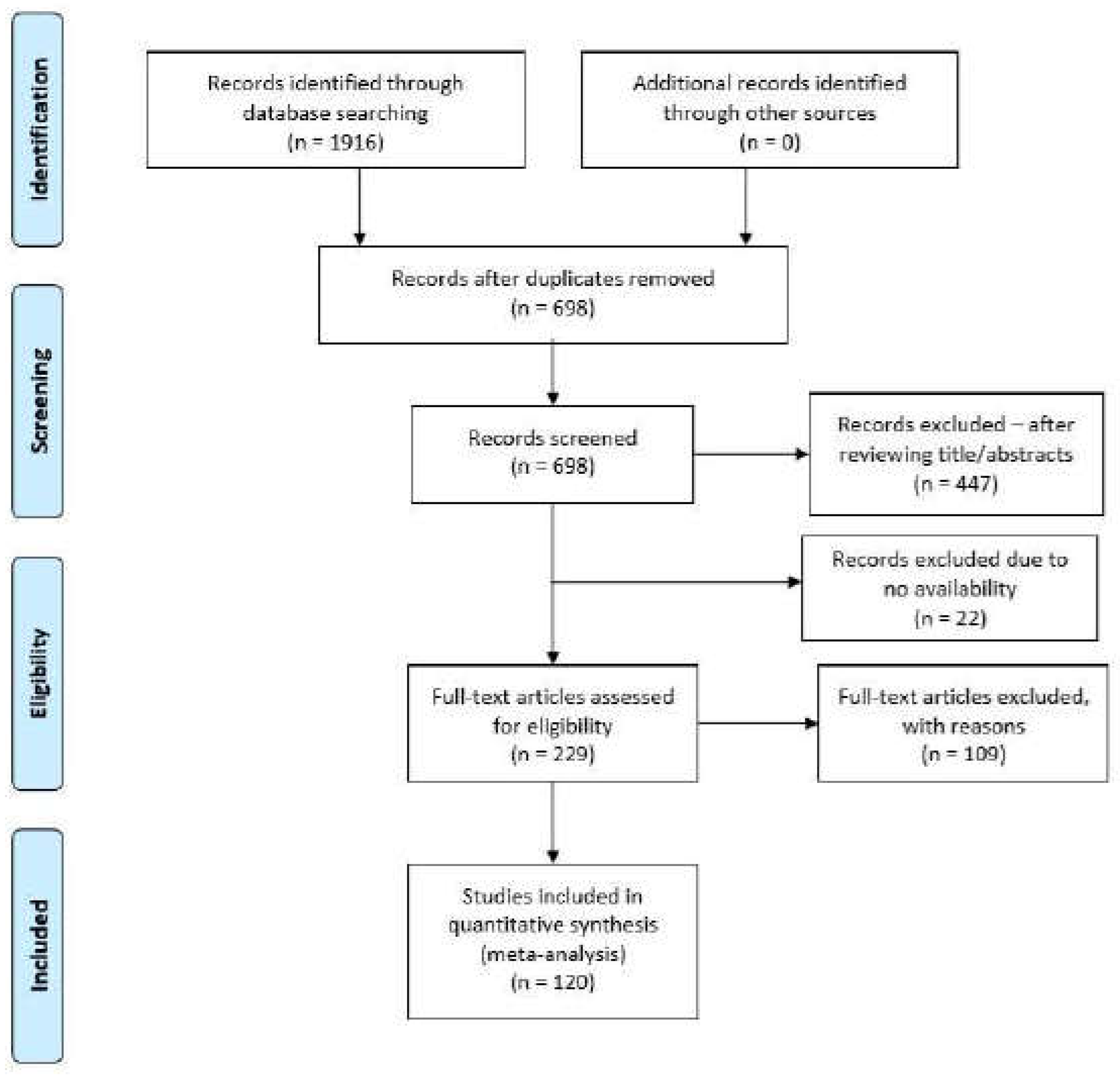
| Characteristics | Temperature group 1 sample size n (%) |
Temperature group 2 sample size n (%) |
Temperature group 3 sample size n (%) |
|---|---|---|---|
| Number of patients | 12495 (39%) | 11655 (36%) | 8173 (25%) |
| Age (years ±SD) | 61.2±7 | 60.1±7 | 61.8±6 |
| Male | 8343 (67%) | 8219 (70%) | 5445 (67%) |
| Arterial hypertension | 7267 (74%) | 3714 (69%) | 4642 (67%) |
| Diabetes mellitus | 721 (9%) | 499 (10%) | 556 (8%) |
| Coronary artery disease | 1897 (21 %) | 1510 (18%) | 1236 (22%) |
| Renal impairment | 434 (6%) | 684 (10%) | 411 (10%) |
| Prior stroke | 786 (8%) | 641 (8%) | 515 (8%) |
| Chronic lung disease | 1309 (16%) | 1093 (13%) | 605 (14%) |
| Variable | Temperature group 1 sample size n (%) |
Temperature group 2 sample size n (%) |
Temperature group 3 sample size n (%) |
|---|---|---|---|
| CPB (min) | 170.5 | 183.5 | 190.1 |
| Cross-clamp time (min) | 90.5 | 104 | 61.1 |
| Circulatory arrest time (min) | 28.3 | 29.9 | 26.5 |
| Ascending aorta replacment | 672 (6.3%) | 594 (6%) | 1114 (18.5%) |
| Hemiarch replacement | 6208 (55.3%) | 3030 (30.4%) | 3597 (64.2%) |
| Total arch replacement | 4578 (38.8%) | 6466 (63.3%) | 1678 (25.3%) |
Disclaimer/Publisher’s Note: The statements, opinions and data contained in all publications are solely those of the individual author(s) and contributor(s) and not of MDPI and/or the editor(s). MDPI and/or the editor(s) disclaim responsibility for any injury to people or property resulting from any ideas, methods, instructions or products referred to in the content. |
© 2023 by the authors. Licensee MDPI, Basel, Switzerland. This article is an open access article distributed under the terms and conditions of the Creative Commons Attribution (CC BY) license (http://creativecommons.org/licenses/by/4.0/).





